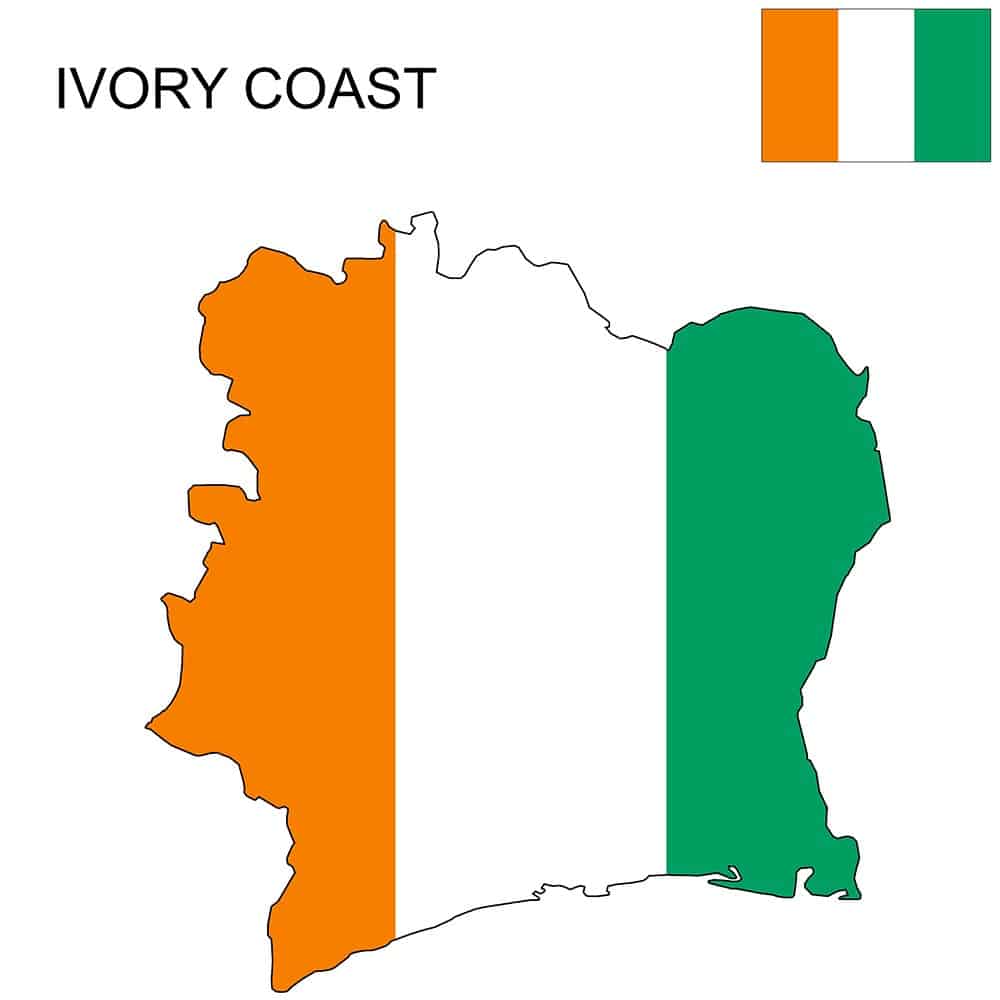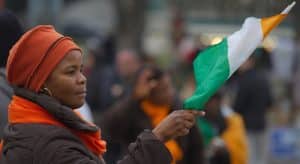Headlines
Cote d’Ivoire Population, Official Language And More.

The country is made up of four natural regions. The coastal fringe consists of a strip of land studded with lagoons on its eastern half. Behind the coastal fringe lies the equatorial forest zone that until a century ago formed a continuous area more than 125 miles (200 km) wide. The ground rises constantly as it recedes from the coast, and the northern half of the country consists of high savanna lying mostly 1,000 feet (300 meters) above sea level. Most of the western border with Liberia and Guinea is shaped by mountain ranges, whose highest point, Mount Nimba (5,748 feet [1,752 meters]), is situated in the Mount Nimba Strict Nature Reserve (designated a UNESCO World Heritage site in 1982), where the borders of the three countries meet.

Cote d’Ivoire
THE POPULATION
Côte d’Ivoire has a population of approximately 28.1 million people. The country is home to more than 60 ethnic groups, with the Baoulé being the largest group, followed by the Bété, Senufo, and Malinké . The official language is French, but there are also more than 60 indigenous languages spoken throughout the country.
THE LANDMARK
Côte d’Ivoire is known for its beautiful landscapes and landmarks. One of the most popular landmarks in the country is the Basilica of Our Lady of Peace in Yamoussoukro. It is one of the largest churches in the world and was built by former President Félix Houphouët-Boigny . Another popular landmark is the Comoé National Park, which is home to a variety of wildlife, including elephants, lions, and leopards.
THE OFFICIAL LANGUAGE
The official language of Côte d’Ivoire is French. It was introduced during the colonial period and has since become the language of education, government, and business. However, there are also more than 60 indigenous languages spoken throughout the country.
THE CULTURE
Côte d’Ivoire has a rich cultural heritage that is reflected in its music, dance, art, and cuisine. Music and dance are an integral part of Ivorian culture, with traditional music styles such as Zouglou and Coupé-Décalé being popular throughout West Africa. Ivorian cuisine is known for its use of fresh ingredients such as seafood, vegetables, and spices. Some popular dishes include Foutou, a mashed yam dish served with soup or stew, and Attieke, a side dish made from cassava.
THE ECONOMIC STABILITY
Côte d’Ivoire has one of the fastest-growing economies in Africa. The country’s economy is largely based on agriculture, with cocoa being its main export crop. Other important exports include coffee, palm oil, and rubber. In recent years, Côte d’Ivoire has made significant progress in reducing poverty and improving access to education and healthcare.
THE GDP
Côte d’Ivoire has one of the fastest-growing economies in Africa. According to the World Bank, the country’s Gross Domestic Product (GDP) was $70.0 billion in 2021. The country’s economy is largely based on agriculture, with cocoa being its main export crop. Other important exports include coffee, palm oil, and rubber.
THE CURRENCY
The official currency of Côte d’Ivoire is the West African CFA franc (XOF). It is used by eight countries in West Africa, including Benin, Burkina Faso, Guinea-Bissau, Ivory Coast, Mali, Niger, Senegal, and Togo.
THE FOOD
Ivorian cuisine is known for its use of fresh ingredients such as seafood, vegetables, and spices. Some popular dishes include Foutou, a mashed yam dish served with soup or stew, and Attieke, a side dish made from cassava. Other popular dishes include Garba, a rice dish served with fish or meat and Alloco, fried plantains served with a spicy tomato sauce.
MAJOR CITIES
The largest city in Côte d’Ivoire is Abidjan, which is also the economic capital of the country. Other major cities include Bouaké, Daloa, and Yamoussoukro.
MAJOR AIRPORTS, SEAPORTS AND SCHOOLS
The main international airport in Côte d’Ivoire is the Félix-Houphouët-Boigny International Airport in Abidjan. Other airports include the Bouaké Airport and the San Pédro Airport. The main seaport in Côte d’Ivoire is the Port of Abidjan, which is one of the busiest ports in West Africa. Some major schools in Côte d’Ivoire include the University Félix Houphouët-Boigny in Abidjan and the University of Bouaké in Bouaké.





